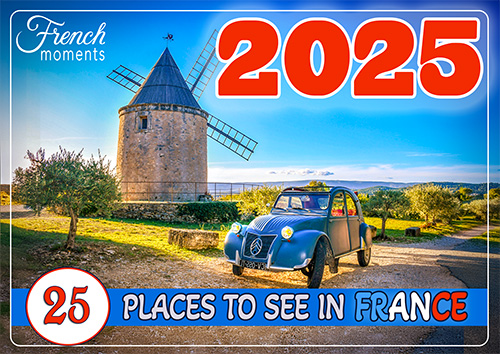Grand-Palais and Petit-Palais are impressive Parisian landmarks designed for the 1900 Universal Exhibition to showcase Paris’ splendour. Let’s learn more about what there is to see in each building.
10 Reasons to Visit Grand Palais and Petit Palais
Visiting the Grand Palais and Petit Palais promises a blend of art, history, culture, and architectural splendour, making them must-see destinations for anyone exploring the vibrant tapestry of Paris.
1. Architectural Marvels
Both the Grand Palais and Petit Palais are architectural masterpieces. The Grand Palais boasts an iconic glass dome and ornate Belle Époque design, while the Petit Palais showcases intricate Beaux-Arts architecture. Visitors can admire these historic structures’ stunning craftsmanship and attention to detail.

2. Artistic Treasures
The Grand Palais often hosts significant art exhibitions featuring renowned artists and diverse art forms. The Petit Palais houses a permanent collection of fine arts, including paintings, sculptures, and decorative arts from various periods. Art enthusiasts can indulge in a rich cultural experience.
3. Cultural Events
The Grand Palais frequently hosts cultural events, from fashion shows and concerts to film screenings and dance performances. The venues’ versatility ensures that something captivating always happens, appealing to a wide range of interests.
4. Historical Significance
Both palaces hold historical significance. The Grand Palais witnessed various events, from hosting summits to serving as a hospital during World War I. The Petit Palais, built for the 1900 World’s Fair, is a testament to the Belle Époque era.

5. Exquisite Gardens
The Grand Palais and Petit Palais are surrounded by public gardens where visitors can take a leisurely stroll or relax amidst greenery. The Petit Palais offers a charming courtyard garden, a serene escape from the bustling city.
6. Free Admission
The permanent collections of the Petit Palais are free for visitors, offering an accessible opportunity to explore exquisite art and architecture without cost.
7. Central Location
Both palaces are situated in prime locations within Paris. The Grand Palais is near the Champs-Élysées and the Seine River, while the Petit Palais is adjacent to the Champs-Élysées and the prestigious Avenue des Champs-Élysées.

8. Photography Opportunities
Both palaces’ stunning architecture, interiors, and gardens provide fantastic backdrops for photography, making them a haven for aspiring photographers and Instagram enthusiasts.
9. Educational Experience
Guided tours, exhibitions, and informative displays in both palaces offer educational insights into art, history, and architecture, making them valuable resources for learning while enjoying.
10. Parisian Charm from the Belle Epoque era
Exploring the Grand Palais and Petit Palais allows visitors to immerse themselves in the enchanting atmosphere of Parisian elegance, offering a genuine taste of the city’s cultural richness.
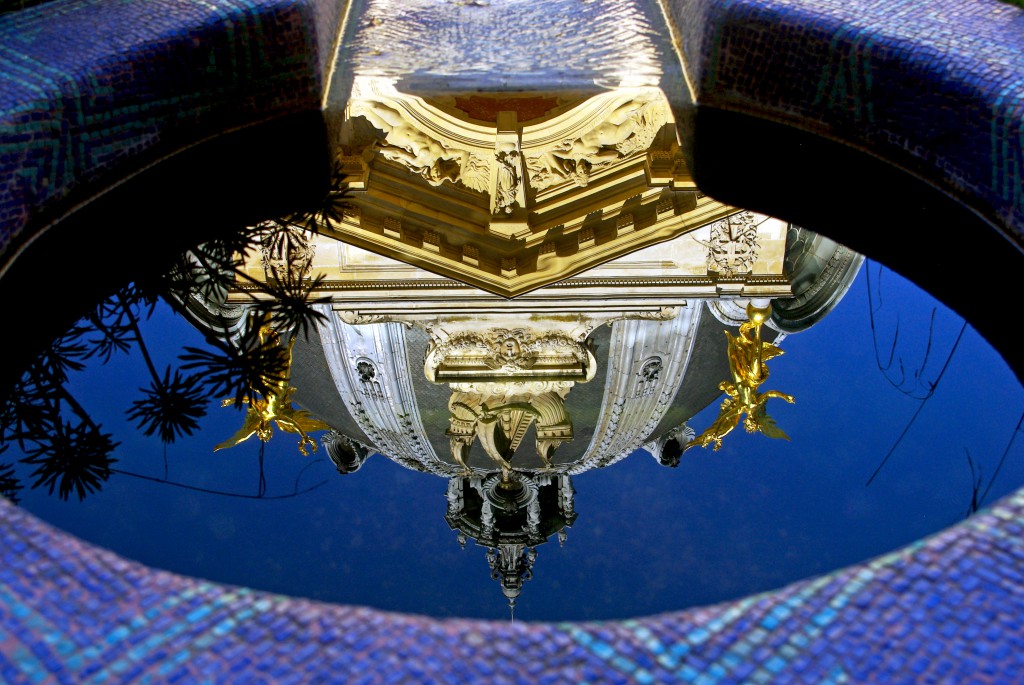
The Grand Palais

The Grand Palais displays a 240-metre-long facade by Henri Deglane on Avenue Winston Churchill, with an iconic colonnade behind which runs a mosaic frieze portraying art across different civilisations. Two monumental bronze quadrigae (statues depicting a chariot with flying horses) by Georges Récipon crown each end of the main facade.
The quadrigae depict:
- On the Champs-Elysées’ side: “Immortality ahead of Time”, and
- on the Seines’ side, “Harmony triumphing over Discord”.
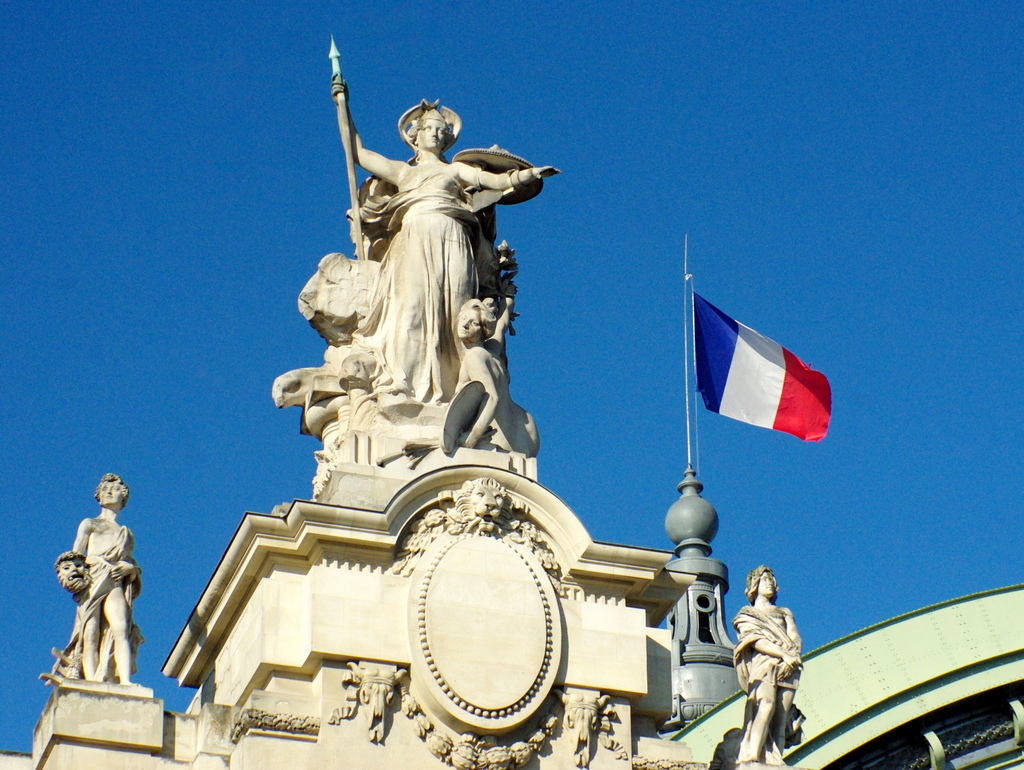
A masterpiece of Art Nouveau for its ironwork, the main roof of the Grand Palais is made of steel and glass. The palace is topped by a superb, enormous, flattened dome 45 metres above the ground. The weight of the glass, iron and steel structure is estimated to be 8,500 tonnes. The metal alone accounts for 6,000 tonnes, equivalent to the weight of the Eiffel Tower, built a decade before.
From 1993 to 2005, the Grand Palais was closed to the public during its indoor and outdoor renovation. Its great hall of 77,000 square metres now hosts temporary exhibitions worldwide. The western side of the building also houses the Palais de la Découverte, a famous museum dedicated to scientific discovery which features a planetarium.
In one of its pediments is an engraving which describes the Grand Palais as a “monument dedicated by the Republic to the glory of French art”.
A century of transformation
Throughout the 20th century, the Grand Palais witnessed history’s tragedies and assumed unforeseen roles. At the onset of the Great War, it served as barracks for colonial troops preparing for the front. It transformed into an impromptu hospital for wounded naval personnel when city hospitals were overwhelmed.
During World War II, the Germans repurposed the Palais to house military vehicles. Amid Paris’s liberation fight in August 1944, German bombings hit the adjoining police station. A minor fire sparked in the building, hindered by firefighters tending to animals from a circus under the glass roof. They also shielded artworks sent by mobilized or imprisoned artists.
On July 13, 2008, 43 world leaders gathered in the grand nave for the Union for the Mediterranean summit.
In the summer of 2024, the Grand Palais will host fencing and taekwondo events as part of the Paris Summer Olympic Games.
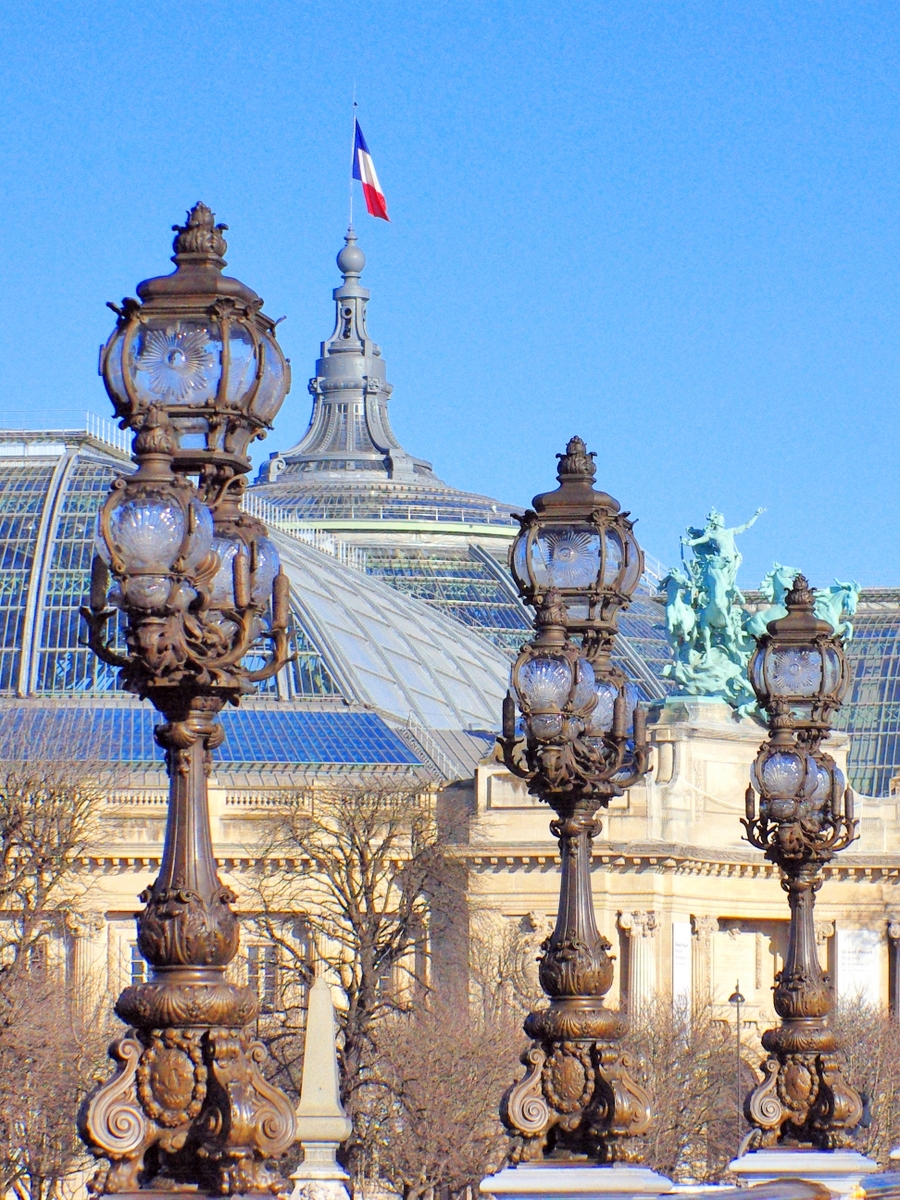
The Petit Palais
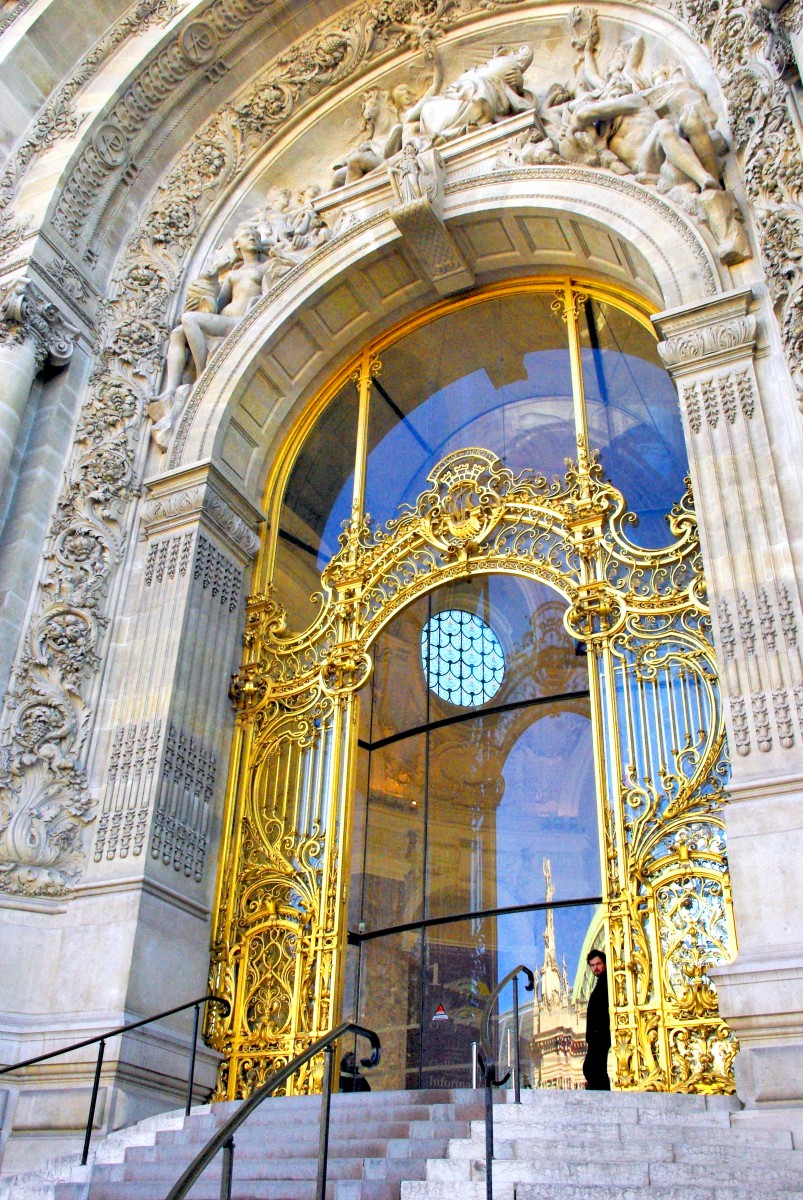
Opposite the Grand Palais stands its counterpart, the Petit Palais. Built at the same time as the Grand Palais by architect Charles Girault, it elegantly displays the architecture of “La Belle Epoque”.
While the Grand Palais belongs to the State, the Petit Palais is owned by the City of Paris, which has used it as the Paris Fine Arts Museum (Musée des Beaux-Arts de Paris).
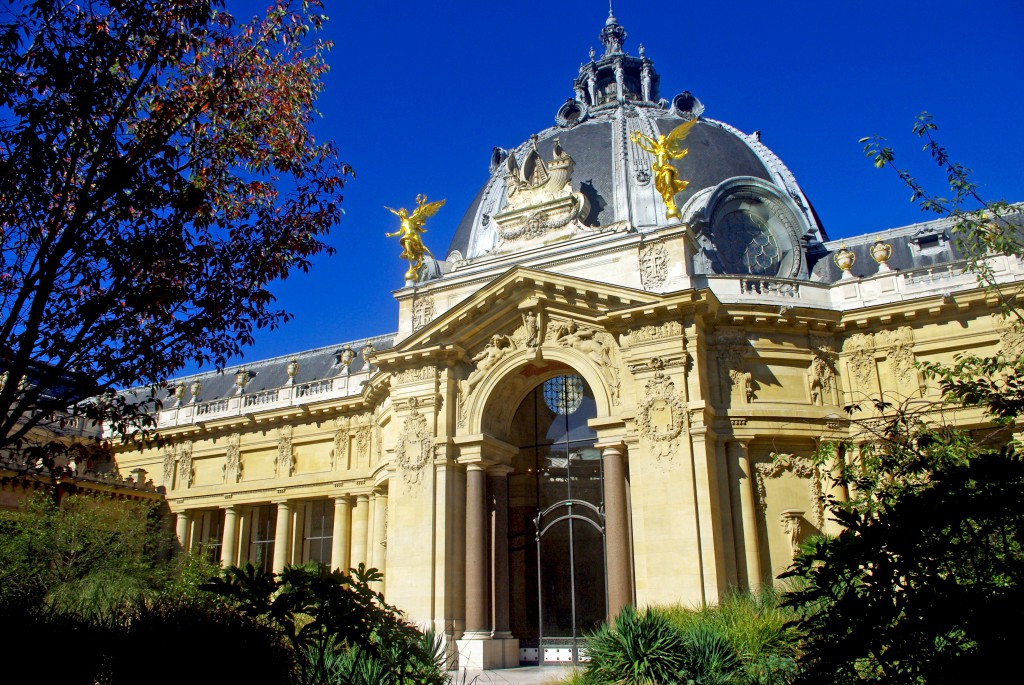
The Petit Palais is organised around a semi-circular courtyard which hosts a beautiful inner garden. The façade presents an iconic colonnade, a grand porch with remarkable railings and a gold-leafed door. The tympanum displays the City of Paris surrounded by Muses, by sculptor Jean Antoine Injalbert.
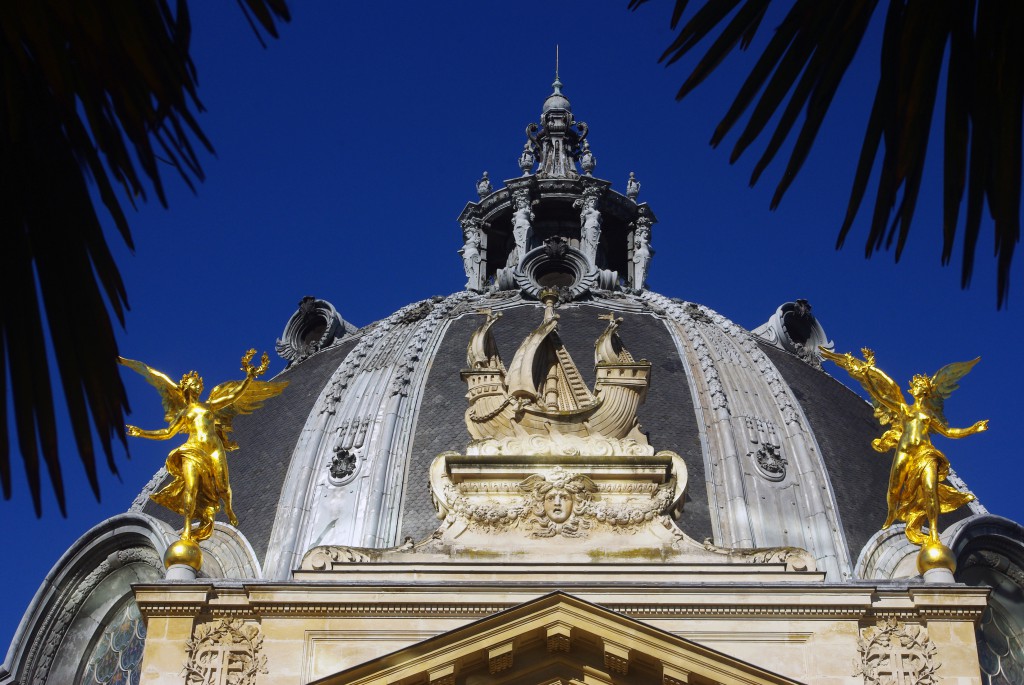
The façade inspired several other buildings worldwide, such as the Royal Museum for Central Africa in Tervuren, Belgium (also designed by Charles Girault) and Saigon’s opera house in Vietnam (edified in 1900).
At the same time as its counterpart, the Grand Palais, the Petit Palais went through a complete and successful renovation in the last decade to return it to its initial glory.
The collections in the Fine Arts Museum feature great pieces of art. In 1902, Eugène and Auguste Dutuit donated their collection of 20,000 items, which included antiques, medieval and Renaissance art objects, paintings (Rembrandt, Rubens…), drawings (Schongauer, Dürer…), books, enamels, and porcelain. Then, in 1930, Edward and Julia Tuck bequeathed their collection of French art items of the 18th century.
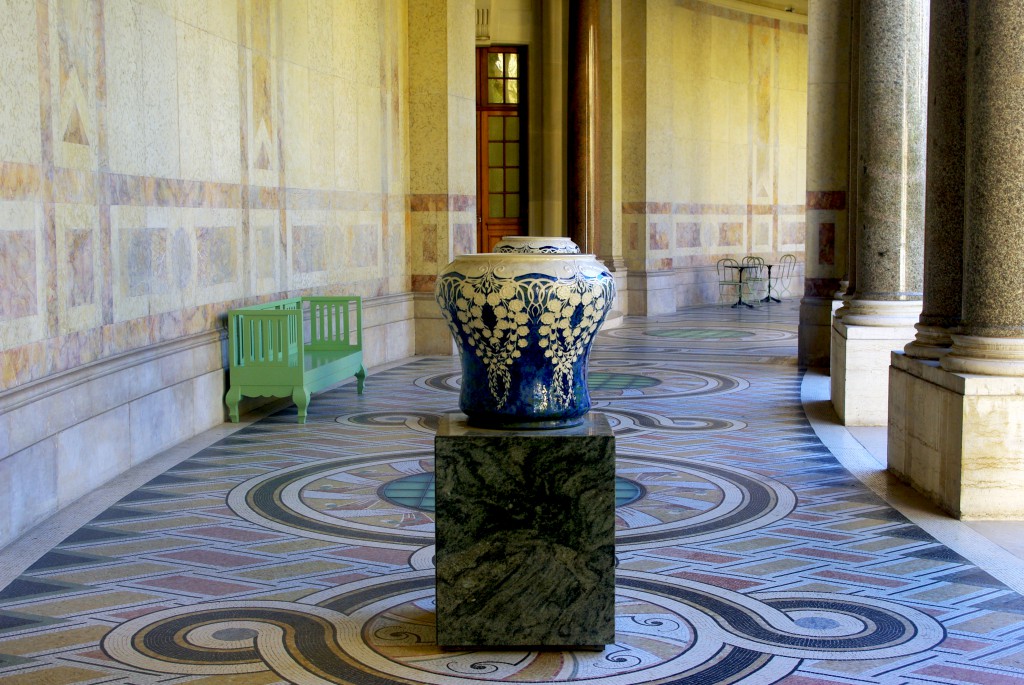
Other famous features of the Fine Arts Museum include works from Eugène Delacroix, Auguste Renoir, Jacques Louis David, Camille Pissarro, Edouard Manet, Claude Monet, Gustave Moreau…
Grand Palais and Petit Palais on the Republican Axis
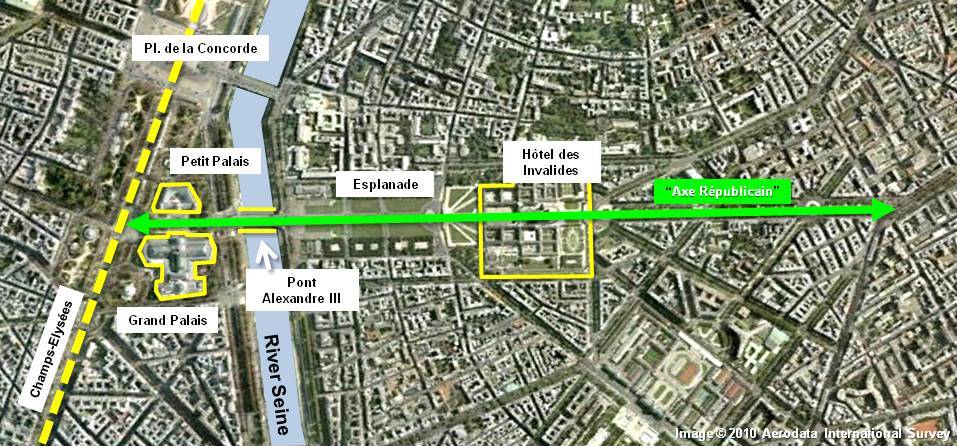
From the Place Clemenceau, another ‘Grand Perspective’ opens towards the Hôtel des Invalides, passing through the Grand Palais and the Petit Palais, the Pont Alexandre III and the Esplanade des Invalides. Because it was completed during the 3rd French Republic, it was commonly known as the “Republican Axis”, echoing the older “Historical Axis” along the Champs-Elysées.
Official website of Paris Tourist Office Board: http://www.parisinfo.com



